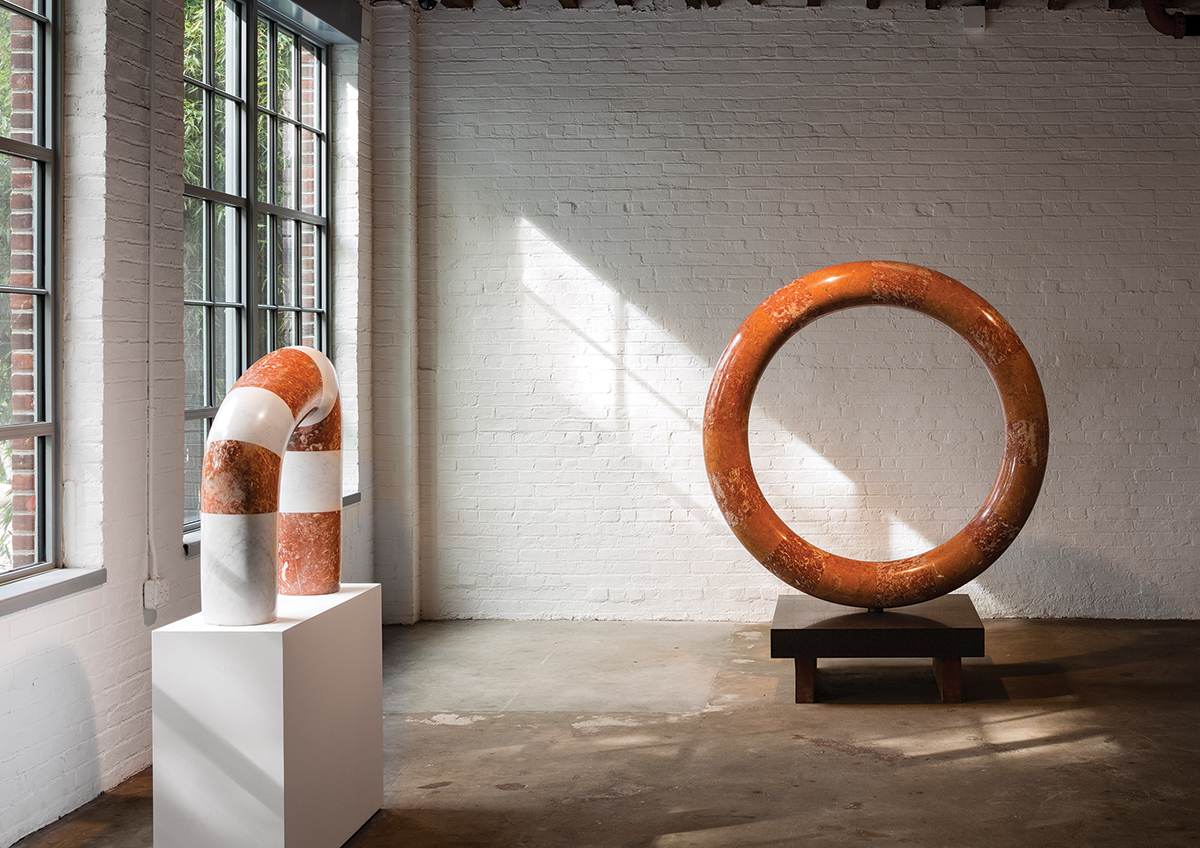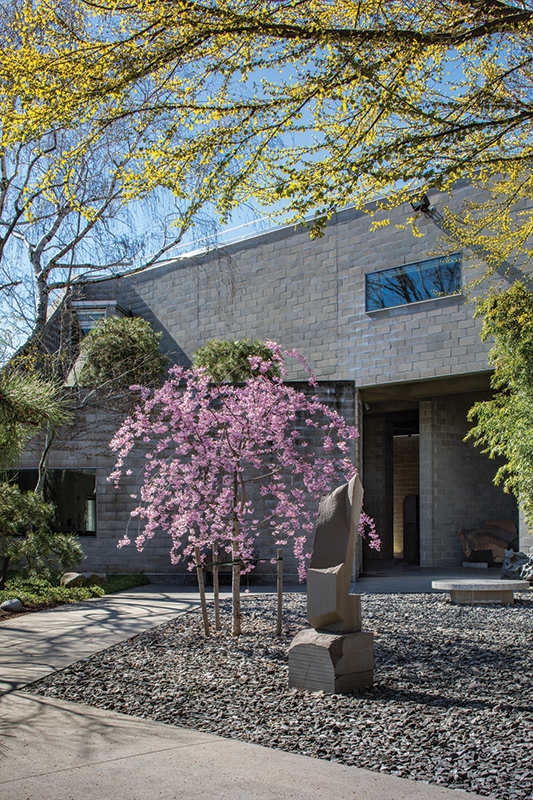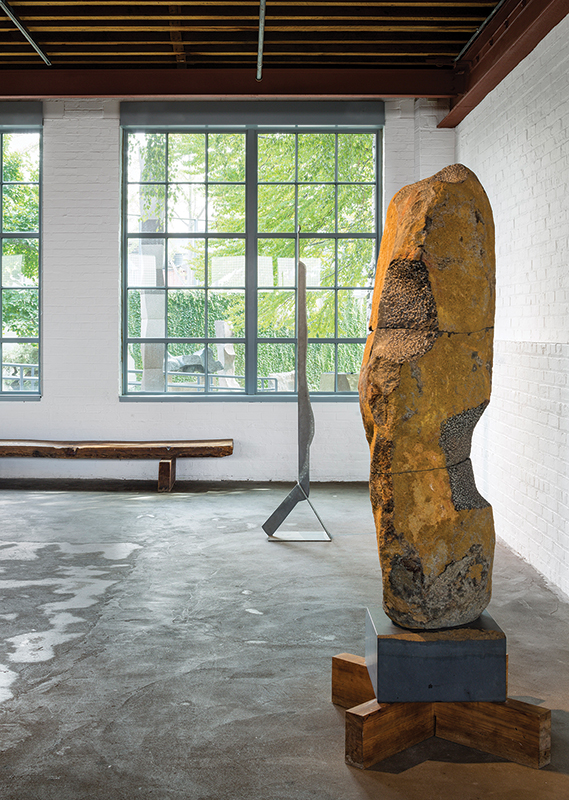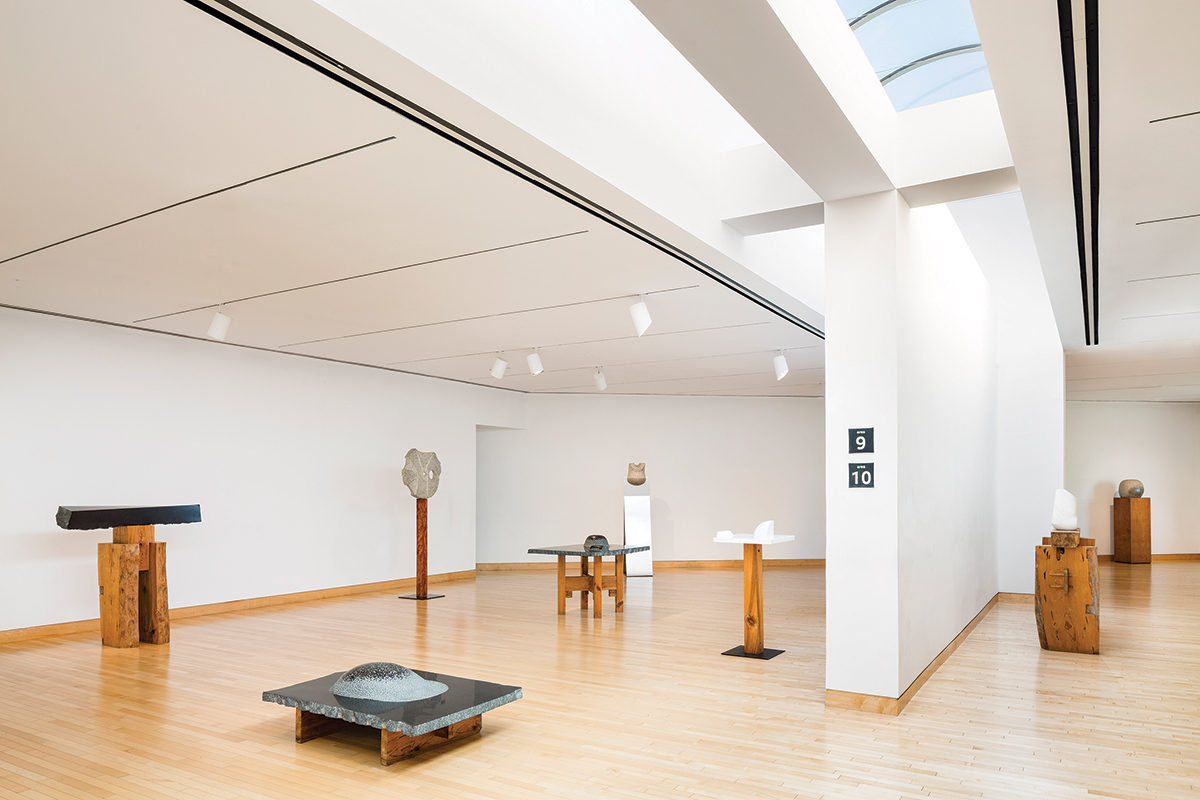“Sometimes I think I’m part of this world today,” mused the multidisciplinary artistic genius that was Isamu Noguchi. “Sometimes I feel that that maybe I belong in history or in prehistory, or that there is no such thing as time.”

Some might argue time to be almost irrelevant to such a visionary who guaranteed his own immortality thanks to his influence across art, design, and architecture. Even if you don’t recognise the name, you will likely be familiar with the work.
It was work profoundly influenced by his upbringing. Born in Los Angeles in 1904, there was a certain inevitability to a life of creativity for Noguchi, his Japanese father being a poet, and his American mother, a writer. His multicultural heritage would greatly inform his artistic creations, too, lauded for his ability to seamlessly blend Eastern and Western aesthetics and transcend cultural boundaries. At the time of his death, in 1988, he had studios in both the US and Japan.
“The essence of sculpture is for me the perception of space, the continuum of our existence.”
Noguchi began taking sculpture classes at New York’s Leonardo da Vinci Art School while studying medicine at Columbia in the early 1920s. But he soon gave up dreams of becoming a doctor to pursue art fulltime and was granted a John Simon Guggenheim Memorial Foundation Fellowship in 1927 which he used to move to Paris where he studied under the tutelage of Constantin Brancusi. In the biography Listening to Stone: The Art and Life of Isamu Noguchi, author Hayden Herrera recounts how painter Andrée Ruellen recalled that Noguchi “seemed to be attached to everything about Brancusi” even going so far as to wearing Romanian wooden shoes “like Brancusi did”: “And he talked over and over about how Brancusi lived for nothing but work. I can’t say that in our circle Isamu attracted special attention for his talent. But I thought that he had a wonderful sense of beauty.” It was during this period that Noguchi began exploring the relationship between space, material, and human interaction, laying the groundwork for his distinctive artistic style.
“I felt that the old-fashioned way of doing things, for instance, with stone, with your own hands, left you a greater freedom.”
After a year in Europe, the artist returned to the US, where he had his first abstract sculpture solo exhibition at the Eugene Schoen Gallery in New York, before travelling again; first to Europe, and then to Asia where he studied calligraphy in China and Japanese pottery making. Noguchi arrived back in New York in the early 1930s with both his artistic and social horizons well and truly broadened.
“Art is too much in the hands of the so-called tastemakers, dealers, critics… I like to think that art may be something that everybody should be able to enjoy and have access to.”


Noguchi’s legacy extends well beyond art thanks in part to collaborations with renowned architects and designers like R. Buckminster Fuller and Geroge Fuller. Noguchi helped redefine the concept of modern living by dreaming up iconic pieces such as the Noguchi Coffee Table (see page 53) which comprises a freeform glass top above a base of two curved wooden pieces – a timeless masterpiece that continues to adorn homes and galleries worldwide and which the artist considered his best furniture design.
“The harshness of electricity is thus transformed through the magic of paper back to the light of our origin – the sun – so that its warmth may continue to fill our rooms at night.”
Equally as iconic are Noguchi’s Akari Light Sculptures, which he began developing in the early 1950s. Named after the Japanese word for ‘light’, the designs – washi paper stretched around bamboo rods and wooden frames – represent illumination and the manifestation of its fragility and physical lightness. They were developed, in part, he said so that everyone may afford the opportunity to own one of his designs: “They are as much an expression of myself as anything else I do.”
Noguchi’s unwavering commitment to social justice and cultural exchange led him to create groundbreaking playgrounds and public artworks such as the Sunken Garden at Chase Manhattan Plaza and the Red Cube in New York City and the tranquil Unesco Garden in Paris, which serve as poignant reflections of his belief in art’s power to unite and inspire.
“In a way, culture exists only to give meaning to the space you see… What I’m really interested in is the meaning or the image that the sculpture projects, rather than the sculpture itself you see…”
Isamu Noguchi’s enduring legacy lies not only in the beauty of his creations, but also in the profound sense of connection they evoke. His work, a testament to his unwavering dedication to exploring the intersection of art, culture, and humanity, continues to inspire generations, encouraging contemplation of the infinite possibilities of art as an expression of beauty and its power to unite. In November 2020, a section of a street near New York’s Noguchi Museum was officially named Isamu Noguchi Way, in tribute to that nearby former studio that the artist transformed into a museum – one of many sites around the world that displays his genius in perpetuity.
Photography: Nicholas Knight.
© The Isamu Noguchi Foundation and Garden Museum, New York / Artists Rights Society







